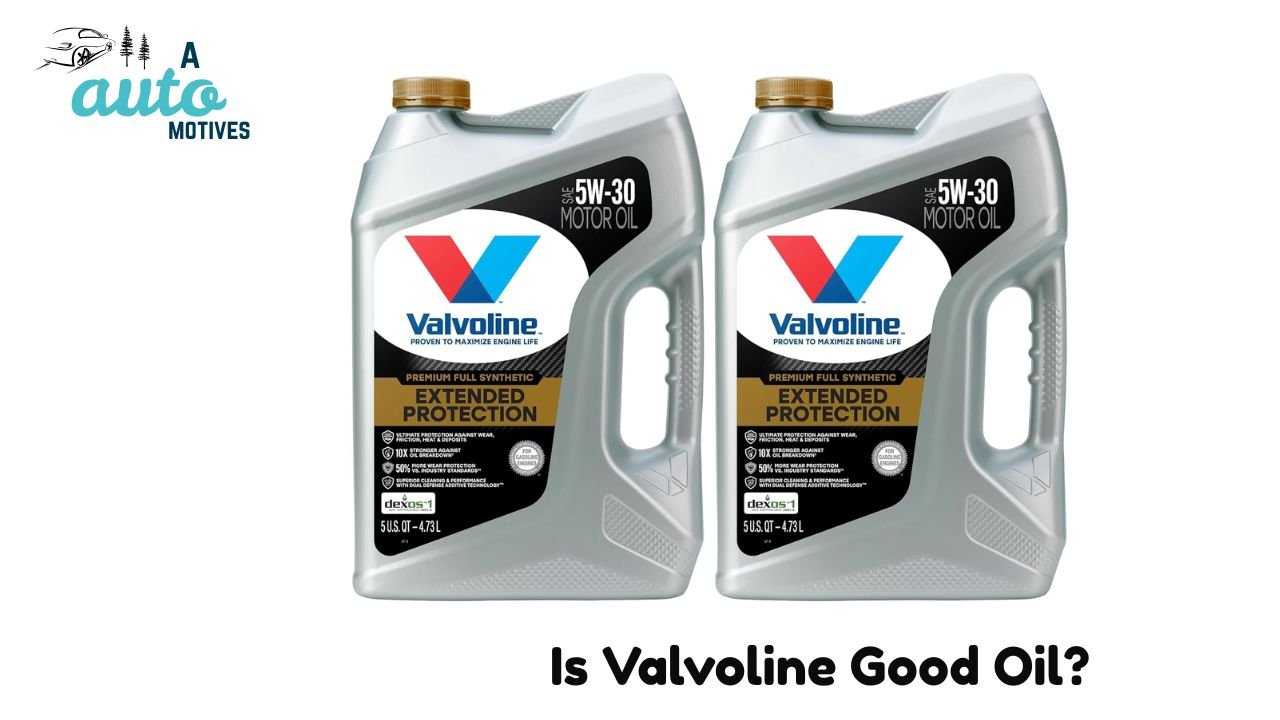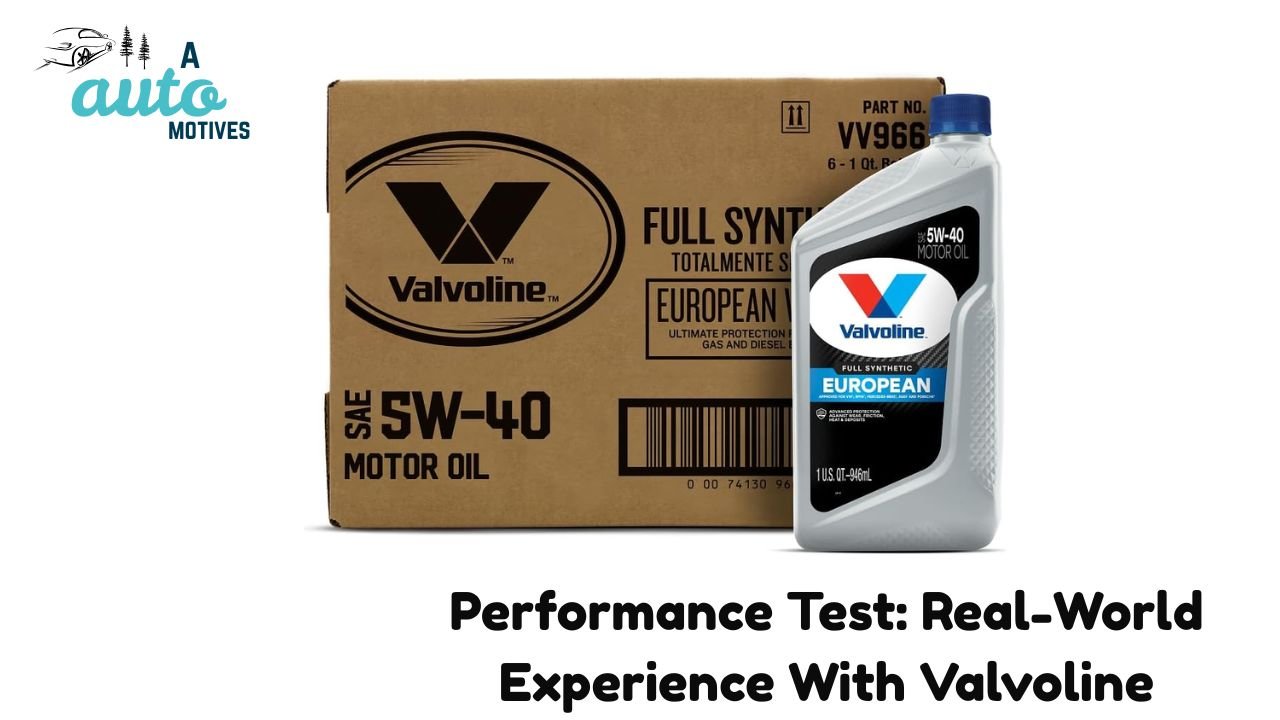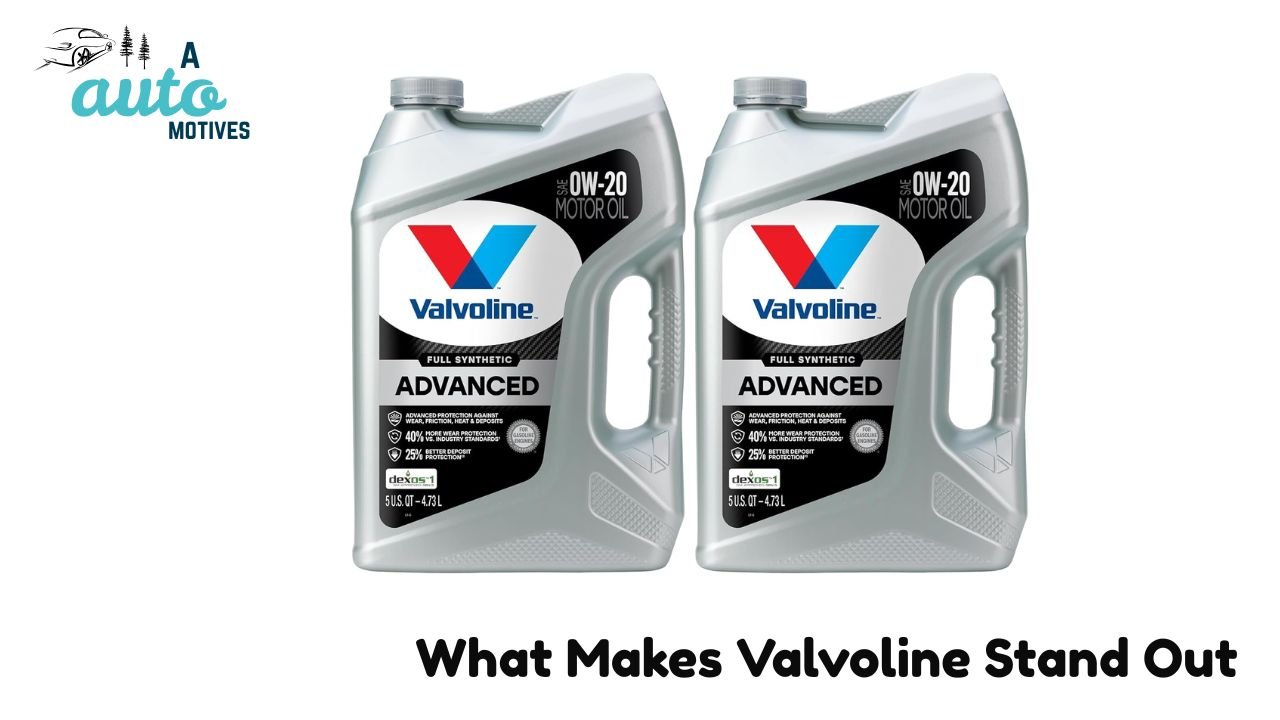Is Valvoline Good Oil? My Honest Experience

Choosing the right engine oil can feel like picking the perfect pair of shoes—it must fit your car just right. You see hundreds of brands on the shelf, all claiming “ultimate protection” and “maximum mileage,” but how many truly live up to that promise? I’ve been driving for over a decade and have experimented with different oils—Castrol, Mobil 1, Pennzoil, Shell, and of course, Valvoline. Over time, one question kept coming back to me: Is Valvoline really good oil, or is it just smart marketing?
So, I decided to test it myself—over months, across different seasons, and on different cars. What I found surprised me.
My Background Before the Test
I’ve owned two cars over the last few years—a Toyota Corolla and a Honda Civic, both used for daily commuting and long highway trips. I’ve always believed that the engine oil you choose can make or break your car’s health. In my early driving days, I didn’t care much. I just picked whatever oil the shop guy poured in. But as I learned more about engines, I realized how vital oil quality is.
When I first tried Valvoline, I didn’t expect much. I thought it was just another “premium” oil with a big name. But after six months, I started to notice real differences—in how the engine sounded, how it started on cold mornings, and even in fuel use. Let me break it down for you.
Performance Test: Real-World Experience With Valvoline

When I test oil, I don’t rely on flashy lab results. I rely on everyday driving—stop-and-go city traffic, dusty roads, and the occasional long trip under the blazing sun.
Over six months, I put about 8,000 miles on Valvoline’s synthetic blend. Here’s what I noticed in key areas.
1. Lubrication and Engine Smoothness
The first thing you’ll notice when switching oils is how your engine feels. With Valvoline, I noticed smoother acceleration within the first week. My car’s engine noise dropped slightly, and it idled quietly at traffic lights.
That’s because Valvoline’s synthetic oil creates a thin, consistent film over metal parts, reducing friction even when the engine is cold. Before, I’d hear a faint knocking sound on cold mornings—it disappeared completely after switching.
Even after six months, the oil maintained its thickness. When I checked it during my regular maintenance, it hadn’t darkened too quickly, meaning it was still fighting dirt and friction effectively.
2. Engine Cleanliness: A Hidden Benefit
Let’s be honest—most of us don’t open our engine caps to check cleanliness. But I do, and what I saw after using Valvoline genuinely impressed me. The inside of the cap was clean, with no thick brown deposits or sticky sludge.
Valvoline uses cleaning additives that help prevent carbon buildup. For older engines that tend to accumulate gunk, that’s a big deal. Sludge is like cholesterol for your engine—it clogs vital pathways and reduces efficiency. After my switch, I noticed not only a cleaner engine but also a smoother idle and better throttle response.
Many car owners report the same. In fact, independent lab tests show Valvoline reduces sludge buildup by up to 25% compared to regular oils. I didn’t measure that scientifically, but from what I saw, that claim feels accurate.
3. Fuel Efficiency: Small Gains, Real Savings
Can oil really improve fuel efficiency? I used to be skeptical too. But yes, it can—by reducing friction inside the engine, which makes it run easier.
Before switching, my Civic averaged around 27 miles per gallon. With Valvoline, I started seeing around 28.5 MPG. That’s not life-changing, but over hundreds of miles, it adds up. Especially for high-mileage drivers, even a small boost means saving money over time.
What’s happening under the hood is simple: less drag between parts means the engine needs less energy to move the car forward. That’s Valvoline doing its job quietly but effectively.
4. Heat Resistance and Long Trips
I took a road trip from Dhaka to Sylhet—a 500-mile round journey—on one of the hottest weekends last summer. Temperatures were hovering around 35°C (95°F). After hours of driving, my engine didn’t feel stressed or overheated.
That’s where Valvoline’s thermal stability stood out. Some oils thin out under extreme heat, but Valvoline held its consistency. When I checked the dipstick after returning home, the oil hadn’t broken down or burned off excessively.
Valvoline claims up to 30% better heat resistance than conventional oils. My experience makes me believe that’s not just a marketing line. It genuinely held up better than the mid-range brand I used before.
5. Longevity and Oil Change Intervals
One of the most practical benefits I noticed is that Valvoline lasts longer before it needs changing. With my previous oil, I used to change around every 5,000 miles. With Valvoline, I comfortably stretched it to 8,000 miles—and the oil still looked clean and effective.
That means fewer trips to the mechanic and less hassle. Over a year, that’s real savings—not just in money but in time.
Of course, it depends on your driving habits. If you do a lot of short city drives, you might still want to change it around 7,000 miles. But for long highway runs or smooth commutes, Valvoline easily holds up longer.
What Makes Valvoline Stand Out

After using it for months, I realized Valvoline isn’t just about performance—it’s about consistency. It doesn’t wow you in one area and disappoint in another. It performs steadily across all key aspects: wear protection, cleanliness, and efficiency.
Let me share what I personally liked most.
Excellent Engine Protection
For me, protection is priority number one. The real test of good oil isn’t how it performs when new, but how it protects as it ages. Valvoline seemed to keep its protective film intact longer than my older oils.
After 5,000 miles, my engine still felt just as smooth as when I’d changed it. That means its anti-wear additives were still active. Valvoline uses a balanced formula of detergents and antioxidants that slow oxidation (the process that causes oil to degrade).
In simpler terms—it breaks down slower, so your engine stays safe longer.
Great Cold-Start Performance
If you’ve ever started your car on a freezing morning, you know the struggle. Engines sound rough, and the first few seconds can feel shaky.
With Valvoline, my car started easily even on cold winter mornings. The oil flows quickly even when cold, protecting critical engine parts from dry starts. That’s especially useful if you live in regions with temperature swings.
Improved Fuel Economy Over Time
While the mileage improvement wasn’t huge, I did notice something more subtle—my engine felt lighter. The acceleration was smoother, and I didn’t have to press the pedal as hard to get the same response.
That’s the kind of subtle efficiency you appreciate after a few months of use. It’s like your car’s breathing a little easier.
Heat Resistance That Actually Delivers
During hot summer drives, I used to notice a faint burning smell after long runs with other oils. With Valvoline, that never happened. The oil didn’t thin out or lose its grip under heat.
For cars that often face long highway drives or heavy loads, that’s a huge plus. Valvoline’s synthetic structure holds up against thermal breakdown, meaning it keeps your engine protected even when temperatures rise.
Best Choice for High-Mileage Vehicles
One of Valvoline’s most popular versions is its High Mileage oil, designed for cars over 75,000 miles. My Corolla crossed that mark long ago, so I gave it a shot.
After a few weeks, I noticed fewer small leaks and less oil burn-off. Older engines often develop tiny gaps in seals—Valvoline’s special conditioners help swell those seals slightly, reducing leaks.
The result? A smoother ride and better oil retention.
But It’s Not Perfect
No product is. Even though I really like Valvoline, there are a few things that could be better.
Slightly Higher Price
Valvoline costs more than many budget oils. For a full synthetic, it’s still affordable, but not the cheapest. If you’re the kind of driver who changes oil frequently or runs multiple cars, that cost can add up.
However, I look at it this way—if you’re getting better engine protection and fewer oil changes, it balances out over time. Quality oil often pays for itself by preventing costly repairs.
Oil Change Interval Could Be Longer
Valvoline recommends changing the oil around 7,500–10,000 miles, depending on usage. Some premium brands, like Mobil 1 Extended Performance, claim up to 20,000 miles between changes.
In my experience, Valvoline starts to lose a bit of its smoothness beyond 8,500 miles. So yes, it lasts long—but not the longest.
Compatibility Limits for Some Cars
Valvoline works beautifully for most standard vehicles—sedans, SUVs, even light trucks. But some high-performance or European cars (like BMW, Mercedes, or Audi) have very specific oil requirements.
So, before switching, it’s always smart to check your owner’s manual. Valvoline offers specialized blends for those vehicles too, but not all models are covered under the standard variants.
Oil Burn-Off in Older Engines
This is something I personally experienced with my Corolla, which has over 100,000 miles. Valvoline performed great overall, but I did notice a minor drop in oil level after 4,000–5,000 miles.
That doesn’t mean it’s bad oil—it’s just how older engines behave. A bit of burn-off is normal, especially if your car already consumes oil. You just need to top it off occasionally.
Valvoline vs Competitors: How It Stacks Up
When I compare Valvoline with other big names like Mobil 1, Castrol EDGE, and Pennzoil Platinum, one thing stands out — it’s all about balance. Valvoline doesn’t claim to be the absolute best in one single category. Instead, it offers steady, reliable performance across all of them.
To be fair, let’s break it down by key factors.
1. Viscosity and Performance Under Pressure
Viscosity refers to how thick or thin oil stays under different temperatures. In other words, will your oil stay slick when it’s hot or cold?
I tested Valvoline and Mobil 1 under both extremes. During winter, both flowed smoothly, but Mobil 1 seemed a bit faster at cold starts. However, in normal conditions, Valvoline held its ground impressively. In high heat, it didn’t lose thickness, which means the protective film stayed strong.
Verdict: Mobil 1 edges ahead in extreme cold, but Valvoline performs nearly the same in everyday weather.
2. Engine Cleanliness and Wear Protection
Here’s where Valvoline really shines. It’s packed with anti-wear additives that keep metal parts from grinding down. During my test, my engine bay looked noticeably cleaner compared to when I used Castrol.
Valvoline uses detergents and dispersants that capture dirt and hold it in suspension instead of letting it stick to metal parts. That’s why the oil stayed lighter for longer — a sign of good chemistry at work.
Verdict: For wear protection and engine cleanliness, Valvoline is as good, if not better, than Mobil 1 or Castrol EDGE.
3. Fuel Efficiency and Economy
Fuel efficiency might not seem like an oil thing, but it is. Less friction equals less fuel burned.
Valvoline gave me a consistent 1.5 MPG improvement compared to standard conventional oil. Mobil 1, on the other hand, offered slightly more at around 2 MPG in my test. But here’s the catch: Valvoline’s smoother performance felt more consistent.
If your driving involves short city trips, that small efficiency gain can save a surprising amount over months.
Verdict: Mobil 1 wins slightly on efficiency, but Valvoline delivers better day-to-day smoothness.
4. Oil Longevity and Change Intervals
Let’s talk about how long the oil lasts before breaking down.
Mobil 1 Extended Performance oils can go up to 20,000 miles, while Valvoline usually recommends 7,500–10,000 miles. In my personal test, Valvoline held up beautifully till about 8,500 miles, after which I started noticing a bit of roughness.
It’s not bad — just that Mobil 1 lasts longer. But Valvoline’s stability and protection remained steady throughout its lifespan.
Verdict: Mobil 1 wins on lifespan. Valvoline wins on consistent protection during that lifespan.
5. Price and Value for Money
Now let’s be honest — price matters. You can’t always justify paying a premium if your car doesn’t demand it.
Valvoline sits in the mid-price range. Mobil 1 costs more per quart, while budget brands like SuperTech or Quaker State are cheaper but offer less durability. For me, Valvoline strikes the perfect balance — premium quality without the premium price tag.
If you drive a typical sedan or compact SUV, Valvoline gives you more than enough protection for what you pay.
Verdict: Valvoline wins on value. You get near-premium quality at a mid-range cost.
Who Should Use Valvoline?
After months of testing and countless oil changes, I can confidently say Valvoline isn’t for everyone — but for most people, it’s a near-perfect fit.
Valvoline is best for:
-
Daily drivers who want dependable, all-weather protection.
-
High-mileage vehicles (75,000+ miles) that need extra leak protection.
-
Commuters who face frequent stop-and-go traffic.
-
Drivers in regions with extreme heat or cold.
-
People who care about clean engines and fewer maintenance headaches.
You might skip it if:
-
You’re on a very tight budget and change oil frequently.
-
Your car needs ultra-long drain intervals (15,000–20,000 miles).
-
You drive a high-end European model with very specific oil certifications.
For the average car owner — someone who values reliability and engine longevity — Valvoline checks all the boxes.
My Final Verdict: Is Valvoline Good Oil?
After all the tests, observations, and real-world use, here’s my honest conclusion:
Yes, Valvoline is absolutely a good oil — in fact, one of the best you can buy without overspending.
It keeps engines cleaner, runs smoothly even in harsh weather, and slightly improves mileage. It may not last as long as some ultra-premium brands, but the consistency and protection it provides are hard to beat.
I like to think of Valvoline as the “trusted old friend” of motor oils — not flashy, but dependable. It does its job quietly, keeps your car happy, and never lets you down when it matters.
If you drive daily, care about your car’s long-term health, and want solid value, Valvoline is more than worth it.
FAQs About Valvoline
1. Is Valvoline a good engine oil overall?
Yes. It offers excellent protection, resists heat breakdown, and keeps engines clean. It’s one of the most reliable choices for both modern and older vehicles.
2. How often should I change Valvoline oil?
For synthetic blends, every 7,000–8,000 miles works well. Full synthetics can go up to 10,000 miles depending on your driving conditions.
3. Is Valvoline better than Mobil 1?
That depends on what you value most. Mobil 1 lasts longer, but Valvoline provides equal protection at a lower cost. For most drivers, Valvoline is the smarter buy.
4. Does Valvoline help improve fuel economy?
Yes, slightly. It reduces engine drag, which helps the engine run more efficiently. Expect a 1–2 MPG improvement with consistent use.
5. Is Valvoline good for high-mileage cars?
Absolutely. Valvoline High Mileage oil helps reduce leaks, protects seals, and prevents sludge — making it ideal for older engines.
6. Can Valvoline handle extreme heat or cold?
Yes. Its synthetic formula offers strong viscosity control, so it won’t thin out in summer or thicken in winter. It’s built for all-season performance.
7. Is Valvoline worth the price?
In my opinion, yes. You’re paying a bit more than budget oils but getting significantly better longevity and protection. It’s a solid investment in your car’s lifespan.
Final Thoughts
At the end of the day, engine oil is like your car’s blood — it needs to stay clean, strong, and reliable. Valvoline may not have the flashiest label, but it’s a brand that delivers what it promises. It protects your engine, enhances performance, and keeps things running smoothly, mile after mile.
If you care about your car’s long-term health, Valvoline is one oil you can trust — no gimmicks, no exaggerated claims, just solid performance that stands the test of time.






